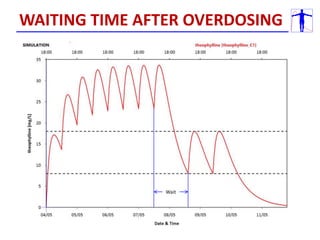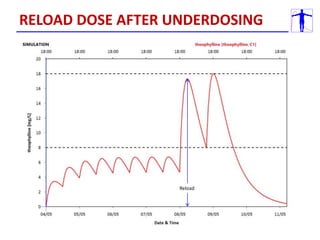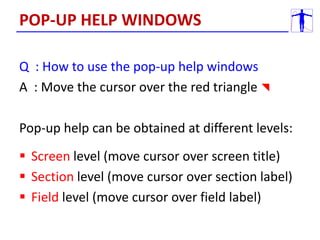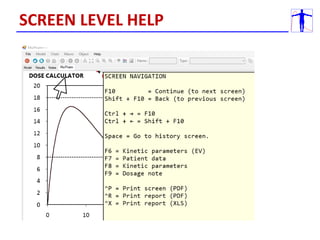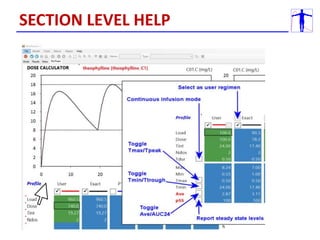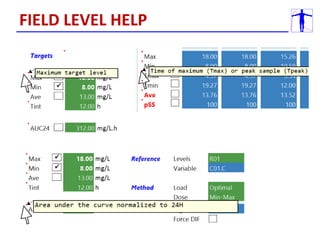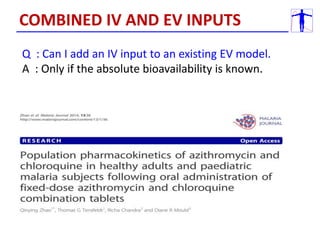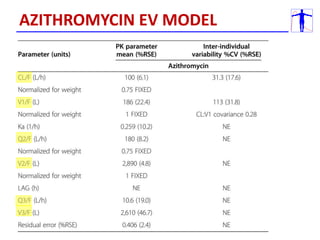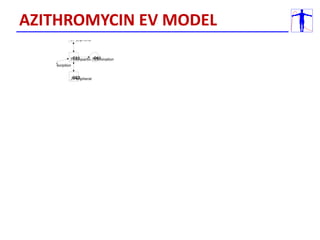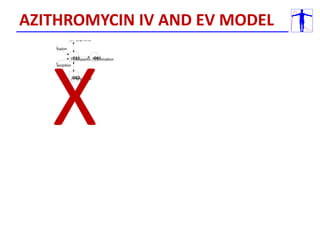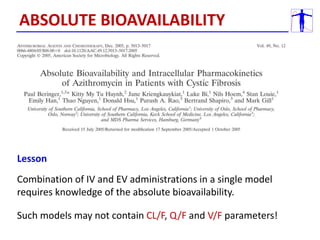MwPharm++ Q&A
- 1. MWPHARM++ Nieko Punt, Medimatics, Maastricht, The Netherlands
- 2. âĒ Model misspecification âĒ AUC calculation and units âĒ Assay error specification âĒ Lag-time estimation âĒ Interaction modeling âĒ Dialysis modeling âĒ Recovering deleted models âĒ Securing databases Q & A CONTENTS V1
- 3. âĒ Adding new drugs and models âĒ Handling continuous infusions âĒ Handling day-night dosing rhythms âĒ Min-Max and Trough-Peak âĒ Automatic dose insertion into med. history âĒ Pop-up help windows âĒ Extravascular models (CL/F, V/F) Q & A CONTENTS V2-V5
- 4. Q : Why does my busulfan population model not fit. A : Replace the 1-comp. model with a 2-comp. model. 1-compartment model MODEL MISSPECIFICATION
- 6. Q : How is the AUC calculated (trapezoidal rule)? A : AUC is derived from the fitted curve using the Runge- Kutta integration method (not from observations). ððī ððĄ = âðķðŋ âC ððīððķ ððĄ = ðķ AUC CALCULATION
- 7. Q : How to change the AUC time unit. A : In the Edsim designer screen. AUC TIME UNIT
- 8. AUC Area under the curve between the start of the last dose and the current cursor position. AUCC Cumulative area under curve between the start of a set reference dose (typically dose number 1 at t=0) and the current cursor position. AUC READ-OUT
- 9. PER DOSE AUC
- 11. Q : We get incorrect fits using a polynomial error. A : Check polynomial function (all concentrations). A user reported that he obtained incorrect fits when using a polynomial assay error for gentamycin. ASSAY ERROR
- 13. Q : Why are the lag-time fits of MwPharm and MwPharm++ different? A : Objective function local minima. A user reported that she obtained different fits in a rifampicin patient when using MwPharm DOS compared to MwPharm++ (Windows). She liked the MwPharm DOS fit better because she though the AUC value was better even though the MwPharm++ fit proved statistically to be the better fit. LAG-TIME FITTING
- 14. MwPharm DOS MwPharm++ AUC = 78 h.mg/L AUC = 79 h.mg/L WSS = 54.3 WSS = 7.4 Tlag = 1.8 h Tlag = 2.7 h RIFAMPICIN LAG-TIME
- 15. Q : How do I model interactions? A1: Using complex interaction models A2: Tweaking the liver function (pragmatic) INTERACTION MODELING
- 18. Tacrolimus : Prevents organ rejection Voriconazole : Prevents fungal infections Interaction : CYP3A5 Voriconazole significantly increases exposure to tacrolimus. Up to a 10-fold* dose reduction of tacrolimus may be required (high variability). *Vanhove et al. Am J Transplant. 2017 Sep;17(9):2372-2380 LIVER FUNCTION TWEAKING
- 22. Q : How do I model (auto) induction? A : Tweaking the liver function Phenobaribital induces its own clearance (auto induction). This can be used for the treatment of jaundice in neonates. (AUTO) INDUCTION MODELING
- 26. âĒ How to enable dialysis? âĒ Must I use blood flow or plasma flow? âĒ How to establish the extraction ratio? DIALYSIS QUESTIONS
- 27. Q : How to enable dialysis? A1: In the model designer screen (difficult) A2: In the settings screen (easy) DIALYSIS - ENABLING
- 28. Q: Must I use blood or plasma flow? A: Plasma flow! ððððð ðð = (1 â ðŧðķ 100 ) â ðððððð DIALYSIS - FLOW
- 29. Q :How to establish the extraction ratio? A1: Assuming Eec = fu (fraction unbound) A2: Using arterial and venous concentrations A3: Direct estimation by fitting. DIALYSIS â EXTRACTION RATIO
- 30. Cin Cout ðļ = ðķðð â ðķððĒðĄ ðķðð Note: E is not constant but dependent on dialysis flow! DIALYSIS: MEASUREMENT
- 31. Renkin EM. Tr Am Soc Artific Organs 1956;2102-5 DIALYSIS: EXTRACTION VS FLOW
- 34. Q: How do recover a deleted population model A: Using an external database tool MwPharm uses so called soft deletes. This means that records are not actually deleted but only hidden in the database. These records can be recovered using an external tool. SQLite : SQLiteStudio (local db) SQL Server : SQL Server Studio (server db) DATABASE MODEL RECOVERY
- 35. SQLiteStudio
- 36. Q: How do I secure my SQLite database? A: Create a copy and manage users The default database is located in: C:MediwareMwPharm++PlugInsMwPharm The default database is: Copy to: MwPharm.db3 Bupren.db3 SECURING DATABASES
- 37. 1. Login 2. Switch between the databases: 3. Login again 4. Manage users SECURING DATABASES
- 39. Avoid lockouts by defining ODBC data sources and creating database specific launch shortcuts. C:MediwareMwPharm++MwPharm++.exe dsn=Clinic SECURING DATABASES MwPharm++ Clinic MwPharm++ Teaching MwPharm++ Bupren
- 41. This type of security is only within the scope of the MwPharm++ application. However, anyone with a 3rd party SQLite tool can still access the database without any password. SECURING DATABASES
- 42. SQLite ODBC drivers: Werner : http://www.ch-werner.de/sqliteodbc/ Devart : https://www.devart.com/odbc/sqlite/ The freeware Werner driver which is installed with MwPharm++ does not support encryption. The commercial Devart driver does ($150,-) and was successfully tested with MwPharm++. SECURING DATABASES
- 43. 1. One TPatient object named P 2. One TPolyMon object called PK 3. One TCompartment named C01 4. One or more TInput objects (any name) 5. One or more TOutput objects (any name) 6. One or more TReference objects (any name) 7. All event time units must be the same MWPHARM++ MODEL REQUIREMENTS
- 44. MINIMAL MODEL
- 46. Q : How do I add new drugs and models A : Use the following step-by-step guide Overview Design a new population model in the model designer using a pre-defined template. Add a new drug and import the new population model. NEW DRUGS AND MODELS
- 47. 1. Start MwPharm++. 2. Go to the model window (there no need to load a patient case). 3. Select FileïŪOpenïŪModel. 4. Open template model âMwPharm-CL_Cx.edxâ. 5. Remove all objects not required with the exception of P, PK, W, R01 and TOT. 6. Update the molecular weight (only if you will be using molar dose or concentration units). 7. Update the model population/individual parameters. 8. Update the assay error for variable C01.C (in case you will do a Bayesian fit). NEW DRUGS AND MODELS
- 48. 9. Update the dosing targets (R01). 10. Save the model on disk. 11. Go to the case screen in MwPharm++. 12. Add the new drug âMyDrugâ using the [Insert] button. 13. Check the [All] checkbox (V1.55 and higher). 14. Select the new drug. 15. Click [Import] below the model list. 16. Find and select the model you just created. NEW DRUGS AND MODELS
- 49. Q : How do I specify continuous infusions A : Use one of the 2 following methods Method 1 Enter to the total infusion time at T(inf) and the total given dose during this time at Value. Method 2 Enter 1.0 hours at Interv and T(inf). Enter the infusion time in whole hours at No. Value now represents infusion rate in mg/h. CONTINUOUS INFUSIONS
- 50. Example: Continuous infusion of 15 mg/h for 24 hours. Method 1: Requires total given dose. Method 2: Limited to whole hour infusion duration. CONTINUOUS INFUSIONS
- 51. Q : How do I specify a day-night dosing schedule A : Using two or more overlapping regular sequences Example of a Day-Night Schedule (6 days) 1st admin: 80 mg at 08:00 2nd admin: 80 mg at 16:00 3rd admin: 120 mg at 23:00 DAY-NIGHT DOSING RHYTHMS
- 53. Q : On what targets is the dose calculation based A : On Min-Max (not Trough-Peak) The dose calculation is always based on the dosing screen specified Min-Max target levels. Trough-Peak levels refer to concentrations measured at typical sampling times at the end and the beginning of a dosing interval. These are report values. MIN-MAX & TROUGH-PEAK
- 54. Min, Max and Peak times are always expressed relative to the start of the administration. The Trough time is specified relative to the end of the dosing interval. The Peak and Trough sampling times are specified in the Settings screen. You can switch between Peak/Max and Trough/Min reporting in the dosing screen by clicking the corresponding check box. MIN-MAX & TROUGH-PEAK
- 56. Q : How to insert a new dose in the medication history A : From the dosing screen or the medication history screen In the dosing screen you can automatically insert the user regimen by clicking the [add to History] button. In the history screen you have 2 options: F3 = Insert current exact regimen F4 = Insert current user regimen An start date/time is automatically calculated (if not specified) in order to facilitate a waiting time in case of overdosing, or a reload dose in case of underdosing. AUTOMATIC DOSE INSERTION
- 57. Wait WAITING TIME AFTER OVERDOSING
- 58. Reload RELOAD DOSE AFTER UNDERDOSING
- 59. Q : How to use the pop-up help windows A : Move the cursor over the red triangle ïŧ Pop-up help can be obtained at different levels: ï§ Screen level (move cursor over screen title) ï§ Section level (move cursor over section label) ï§ Field level (move cursor over field label) POP-UP HELP WINDOWS
- 62. FIELD LEVEL HELP
- 63. COMBINED IV AND EV INPUTS Q : Can I add an IV input to an existing EV model. A : Only if the absolute bioavailability is known.
- 66. AZITHROMYCIN IV AND EV MODEL X
- 67. ABSOLUTE BIOAVAILABILITY Lesson Combination of IV and EV administrations in a single model requires knowledge of the absolute bioavailability. Such models may not contain CL/F, Q/F and V/F parameters!
- 68. INTERACTIVE


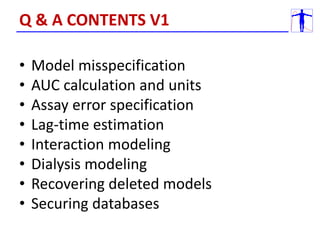
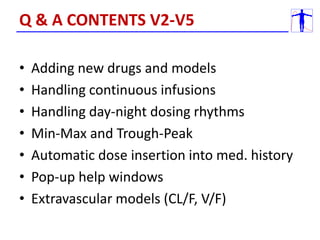
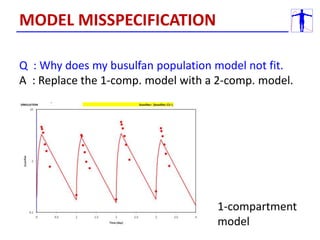
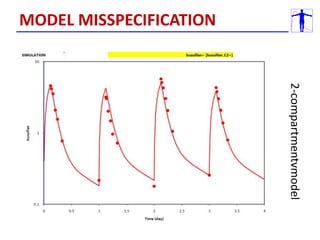
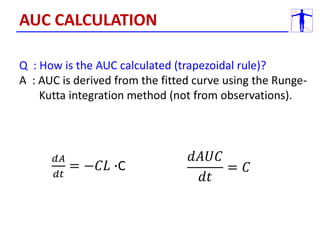
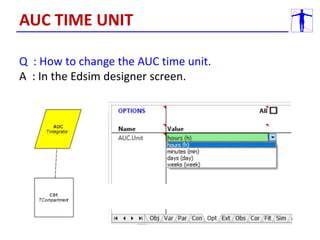
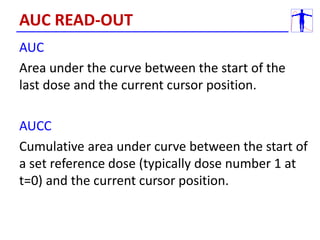
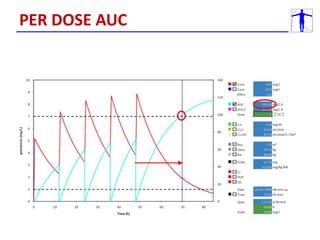
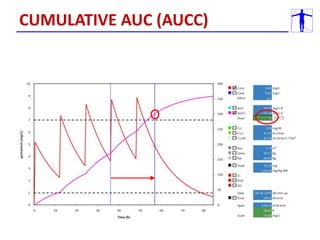
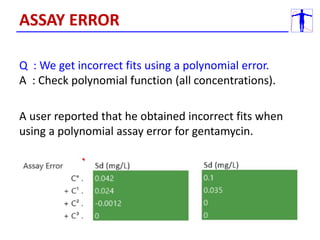
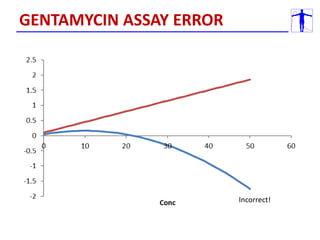
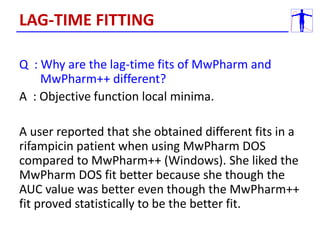
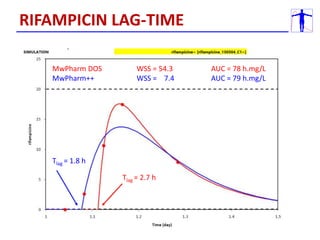
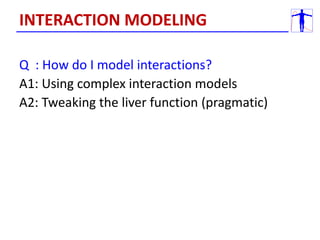
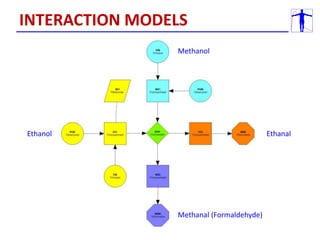
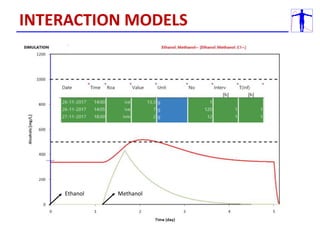
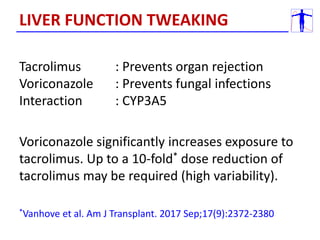
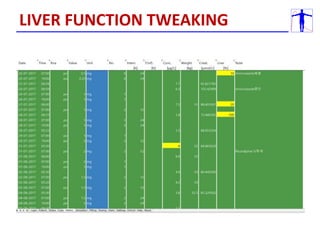
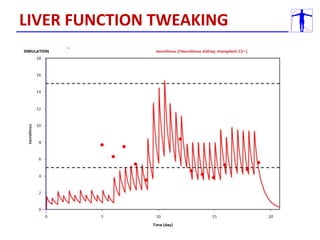
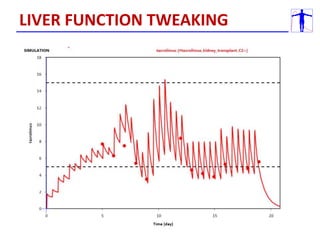

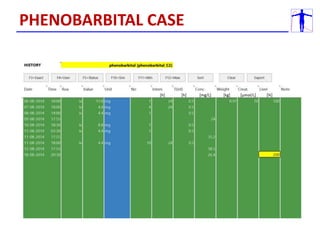
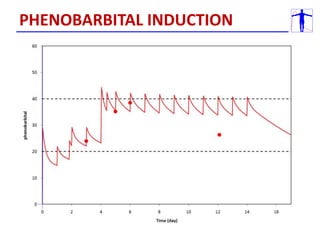
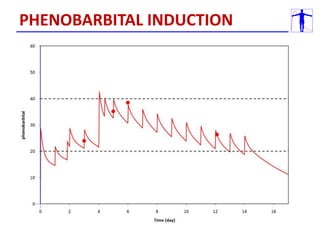
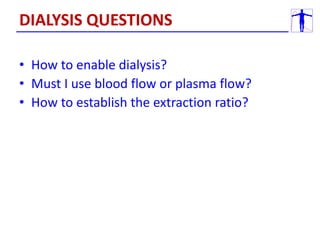

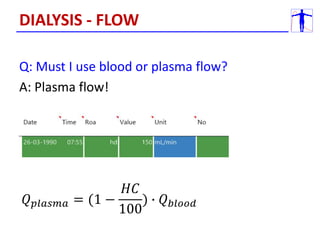
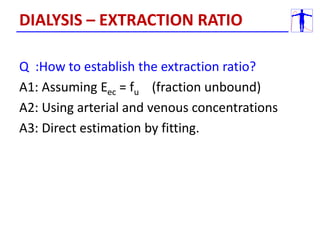
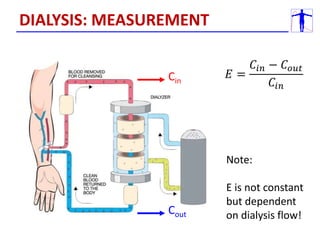
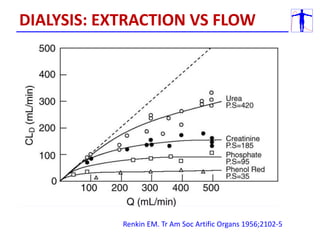
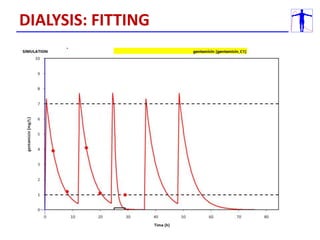
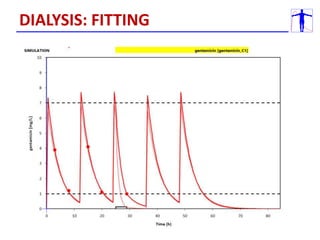
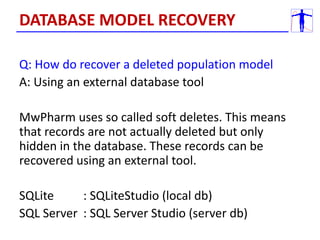
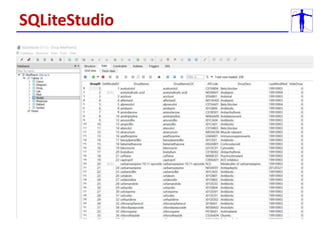
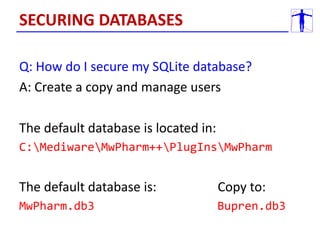
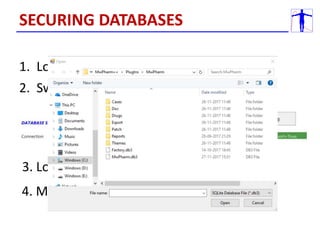
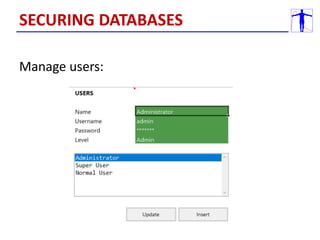
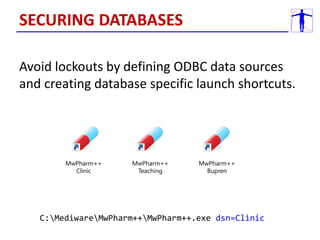
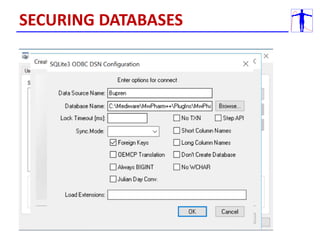
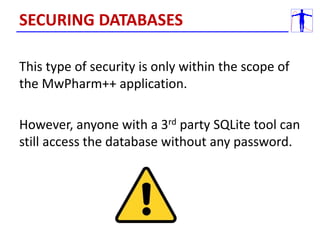
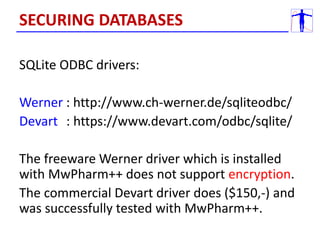
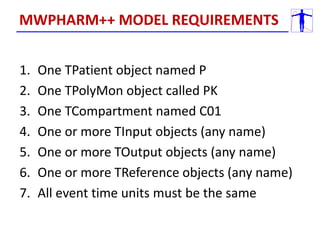
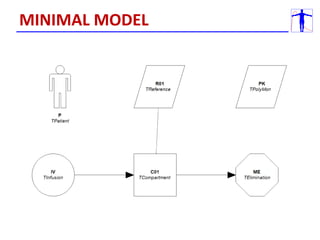
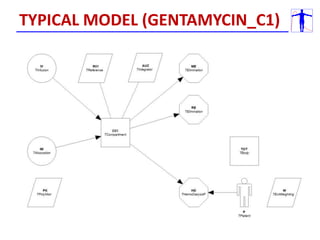
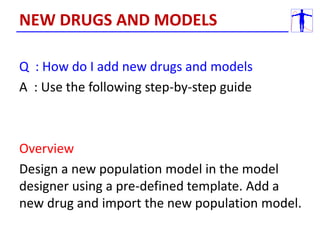
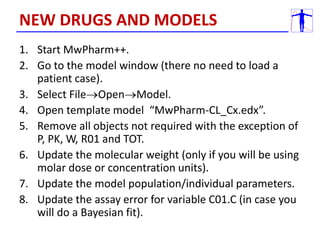
![9. Update the dosing targets (R01).
10. Save the model on disk.
11. Go to the case screen in MwPharm++.
12. Add the new drug âMyDrugâ using the [Insert] button.
13. Check the [All] checkbox (V1.55 and higher).
14. Select the new drug.
15. Click [Import] below the model list.
16. Find and select the model you just created.
NEW DRUGS AND MODELS](https://image.slidesharecdn.com/mwpqa-v5w-210406102430/85/MwPharm-Q-A-48-320.jpg)
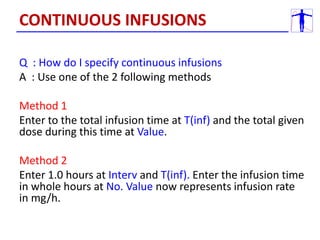
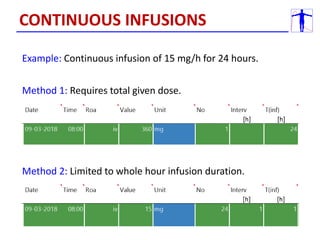
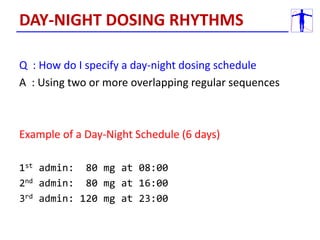
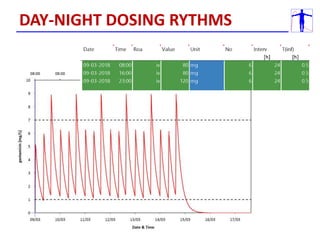
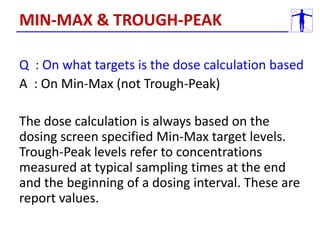
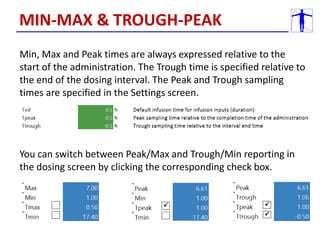

![Q : How to insert a new dose in the medication history
A : From the dosing screen or the medication history screen
In the dosing screen you can automatically insert the user
regimen by clicking the [add to History] button. In the history
screen you have 2 options:
F3 = Insert current exact regimen
F4 = Insert current user regimen
An start date/time is automatically calculated (if not specified)
in order to facilitate a waiting time in case of overdosing, or a
reload dose in case of underdosing.
AUTOMATIC DOSE INSERTION](https://image.slidesharecdn.com/mwpqa-v5w-210406102430/85/MwPharm-Q-A-56-320.jpg)
